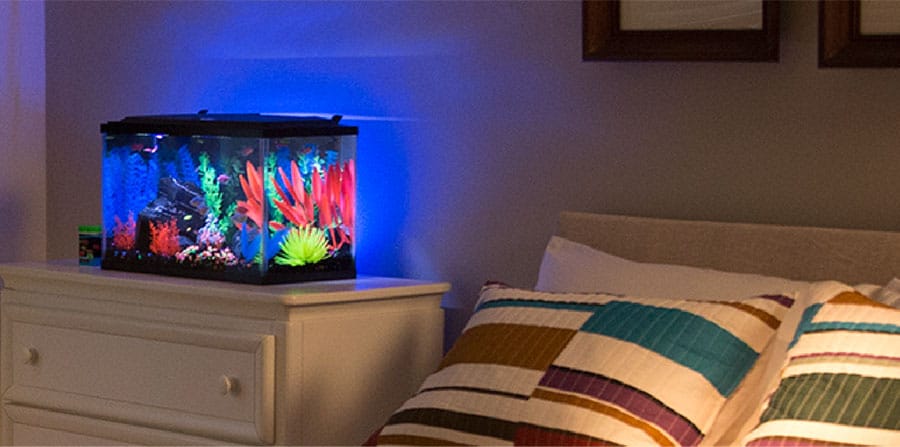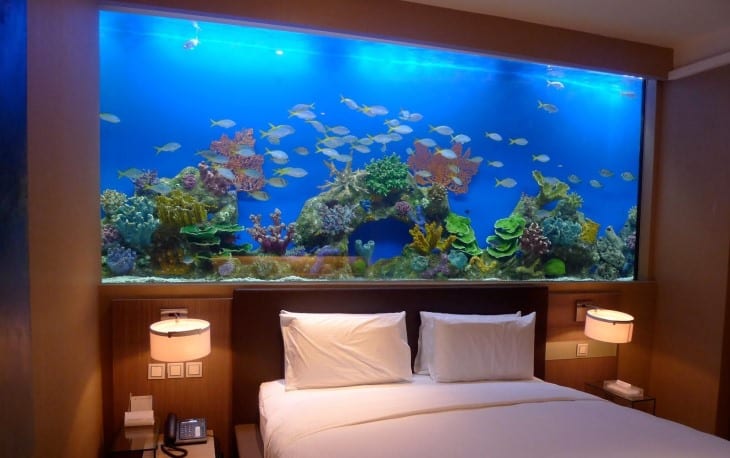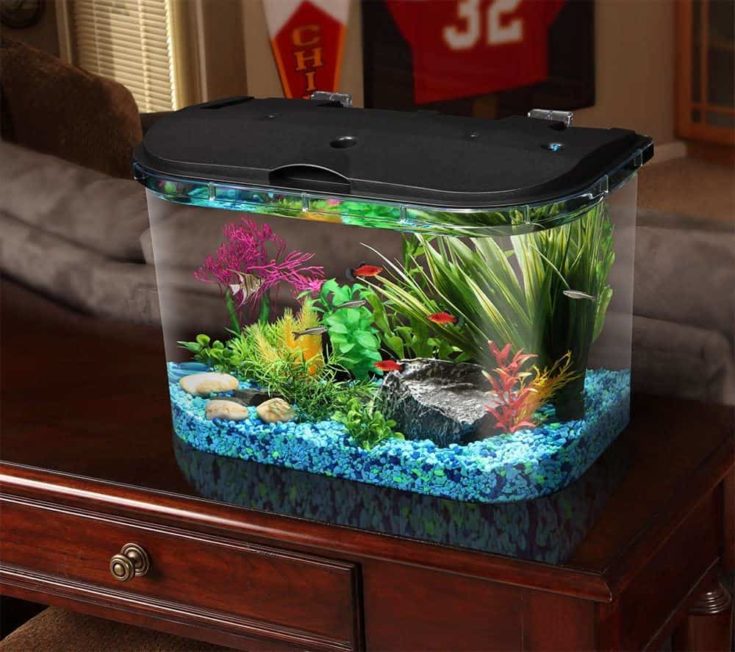Choosing the Right Tank: Small Bedroom Fish Tank

Setting up a small fish tank in your bedroom can be a rewarding experience, adding a touch of tranquility and natural beauty to your space. The first step is choosing the right tank, and this decision depends on several factors, including your bedroom’s size, the types of fish you want to keep, and your budget.
Tank Types and Materials
Small fish tanks come in various shapes, sizes, and materials. The most common types are:
- Glass tanks: These are the traditional choice, offering clarity and durability. Glass tanks are typically available in various sizes and shapes, making them versatile for different setups. They are also relatively inexpensive.
- Acrylic tanks: Acrylic tanks are lighter and less prone to breaking than glass tanks, making them a good option for smaller spaces. They also offer a more seamless look, as the seams are less noticeable. However, acrylic tanks can scratch more easily and are more susceptible to UV damage.
Pros and Cons of Tank Types
Here’s a detailed comparison of glass and acrylic tanks:
| Feature | Glass Tanks | Acrylic Tanks |
|---|---|---|
| Durability | Highly durable, resistant to scratches and impacts | Less durable than glass, can scratch easily |
| Weight | Heavier than acrylic tanks | Lighter than glass tanks |
| Clarity | Offers excellent clarity | Slightly less clear than glass, can distort light |
| Appearance | Seams are visible | Seamless appearance, less visible seams |
| Cost | Generally less expensive | More expensive than glass tanks |
| UV Sensitivity | Not susceptible to UV damage | Susceptible to UV damage, can become cloudy or discolored |
Tank Size Selection
The size of your tank is crucial for the well-being of your fish.
A good rule of thumb is to have at least one gallon of water per inch of fish length.
For example, if you plan to keep a group of small fish that are each about 2 inches long, you would need a tank that is at least 10 gallons.
- Consider the space available in your bedroom. A small tank can fit on a desk or shelf, while a larger tank may require a dedicated stand.
- Choose a tank size that is appropriate for the fish you want to keep. Research the specific needs of your chosen fish species, as some require more space than others.
Tank Size, Material, and Features Comparison
Here is a table comparing different tank sizes, materials, and features, including price ranges:
| Tank Size (Gallons) | Material | Features | Price Range |
|---|---|---|---|
| 5 | Glass | Basic setup, suitable for small fish | $20 – $50 |
| 10 | Glass or Acrylic | More space for larger fish, can accommodate multiple species | $50 – $100 |
| 20 | Glass | Larger capacity, suitable for larger fish or multiple species | $100 – $200 |
| 30 | Glass | Spacious tank, ideal for larger fish or a community tank | $200 – $300 |
| 55 | Glass | Large tank, suitable for larger fish or a complex community tank | $300 – $500 |
Selecting the Perfect Fish

Choosing the right fish for your small bedroom tank is crucial for creating a thriving and enjoyable underwater ecosystem. The perfect fish should not only be aesthetically pleasing but also compatible with the tank size, your experience level, and the overall environment.
Choosing Low-Maintenance Fish
Low-maintenance fish are ideal for beginners and those who want a hassle-free experience. They generally require less frequent water changes, have less demanding dietary needs, and are less susceptible to common fish diseases. Choosing low-maintenance fish species for a small bedroom tank can significantly reduce the time and effort required for care.
Popular Small Fish Species
Here is a table listing popular small fish species, their sizes, temperaments, and care requirements:
| Species | Size | Temperament | Care Requirements |
|---|---|---|---|
| Neon Tetra | 1-1.5 inches | Peaceful, schooling | Moderate, requires a planted tank with soft, acidic water |
| Guppy | 1-2 inches | Peaceful, livebearers | Easy, can tolerate a range of water parameters |
| Zebra Danio | 2-2.5 inches | Active, schooling | Easy, hardy and adaptable |
| Ghost Shrimp | 1-2 inches | Peaceful, scavengers | Easy, require a planted tank with hiding places |
| Corydora Catfish | 1-2 inches | Peaceful, bottom dwellers | Easy, require a sandy substrate and plenty of hiding places |
Creating a Balanced Community, Small bedroom fish tank
To create a harmonious community of fish in a small tank, it’s essential to consider compatibility. Choose fish that have similar water parameters, dietary needs, and temperaments. Avoid overcrowding the tank and ensure there are enough hiding places for all the fish.
“When choosing fish for a community tank, it’s best to start with peaceful species and gradually introduce more active or boisterous fish.”
Setting Up Your Small Bedroom Fish Tank

Setting up a small bedroom fish tank is an exciting endeavor that requires careful planning and execution. From selecting the right tank size to choosing the perfect fish, the process involves several steps to ensure the well-being of your aquatic companions. This section provides a comprehensive guide to setting up a small bedroom fish tank, covering essential equipment, decoration tips, and crucial considerations for a healthy and aesthetically pleasing environment.
Tank Placement and Environment
The placement of your fish tank is crucial for its overall health and functionality. Consider the following factors when choosing the perfect spot in your bedroom:
- Sunlight: Direct sunlight can cause excessive algae growth and potentially overheat the water. Place your tank in a location that receives indirect sunlight or artificial lighting.
- Temperature: Fish require specific water temperatures to thrive. Avoid placing your tank near heat sources like radiators or drafts that could fluctuate water temperatures.
- Stability: Choose a sturdy surface to place your tank, ensuring it is level and free from vibrations. This prevents spills and potential damage to the tank.
- Accessibility: Select a location that allows easy access for maintenance tasks such as water changes and cleaning.
Essential Equipment
The following equipment is essential for setting up a small bedroom fish tank:
- Filter: A filter is crucial for maintaining water quality by removing waste and debris. Consider a filter that is appropriate for the size of your tank and provides adequate filtration for the number of fish you intend to keep.
- Heater: Most fish require specific water temperatures to thrive. A heater helps maintain a stable temperature, particularly for tropical fish species.
- Lighting: Proper lighting is essential for plant growth and provides a natural environment for your fish. Select a light that provides adequate illumination for your tank and the plants you choose.
- Substrate: Substrate forms the base of your tank and provides a natural habitat for your fish. Choose a substrate that is appropriate for the type of fish you have and provides a stable base for plants.
- Thermometer: A thermometer is essential for monitoring water temperature and ensuring it remains within the optimal range for your fish.
- Water Testing Kit: Regularly testing water parameters such as ammonia, nitrite, nitrate, and pH levels is crucial for maintaining a healthy environment for your fish.
Filtration, Aeration, and Lighting
- Filtration: A high-quality filter is essential for removing waste, debris, and harmful bacteria from the water. Choose a filter that is appropriate for the size of your tank and provides adequate filtration for the number of fish you intend to keep. Regular maintenance, such as cleaning filter media, is crucial for optimal filtration.
- Aeration: Aeration provides oxygen to the water, which is essential for fish survival. A filter with an integrated air pump or an additional air stone can provide sufficient aeration for your tank.
- Lighting: Proper lighting is essential for plant growth and provides a natural environment for your fish. Select a light that provides adequate illumination for your tank and the plants you choose. The duration of lighting should be adjusted based on the needs of your plants and fish.
Decorations and Plants
- Decorations: Decorations provide enrichment for your fish and enhance the aesthetic appeal of your tank. Consider adding rocks, driftwood, caves, or other decorations that create hiding places and provide visual interest for your fish.
- Plants: Live plants not only add beauty to your tank but also help improve water quality by absorbing nutrients and providing shelter for your fish. Choose plants that are appropriate for the size of your tank and the lighting conditions you provide.
Recommended Equipment Brands
- Filters: Fluval, AquaClear, Eheim
- Heaters: Aqueon, Hydor, Tetra
- Lighting: Finnex, Current-USA, Fluval
- Substrate: CaribSea, Fluval, Eco-Complete
A small bedroom fish tank can bring a sense of tranquility and serenity to your space, just like a cozy small armchair for bedroom can provide a haven for relaxation. Watching the fish swim can be a meditative experience, helping you to de-stress and unwind after a long day.
Similarly, a comfortable armchair can be a perfect spot to curl up with a book or enjoy a cup of tea. Both elements contribute to creating a peaceful and inviting atmosphere in your bedroom, promoting a sense of calm and well-being.
A small bedroom fish tank can bring a sense of tranquility and life to a space. It can be a calming focal point, especially if you’re looking for ways to create a peaceful atmosphere in a small bedroom. You might also consider incorporating other design elements, like the ones you’d find in a small bedroom with an open bathroom , to create a sense of flow and openness.
The movement of the water in a fish tank can also mimic the feeling of a flowing space, which can be particularly beneficial in a smaller room.
